Dưa hành (Pickled Shallots)
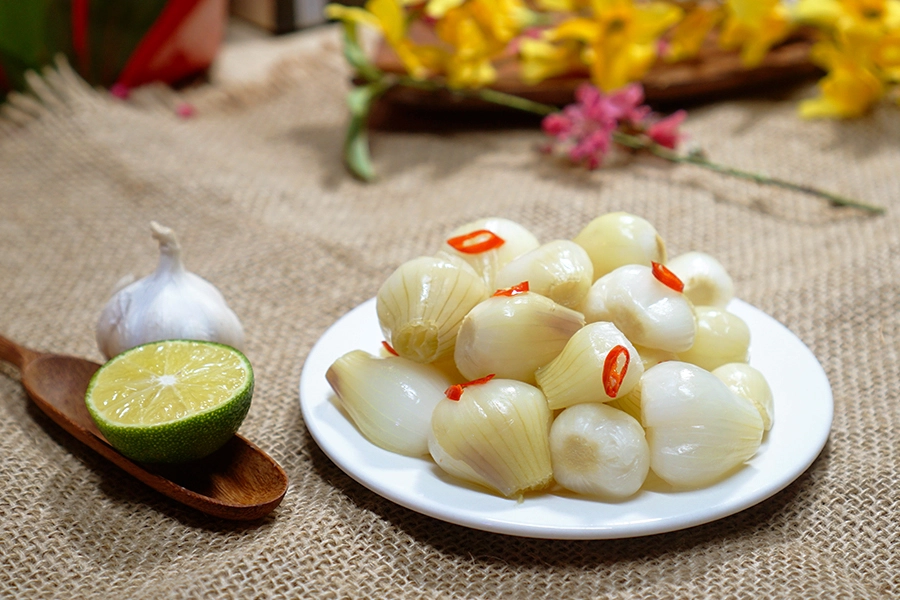
Ingredients
Vegetables
-
1kg shallots (peeled, optionally soaked in water for easier peeling and milder flavor)
-
½ carrot (julienned or sliced for texture and color)
-
5 red chilies (whole or sliced, optional for mild spiciness)
Pickling Liquid
-
500ml rice washing water (nước vo gạo – for initial soak to reduce pungency)
-
500ml vinegar (for preservation and sour flavor)
-
300g sugar (to balance acidity)
-
50g salt (for fermentation and seasoning)
Nutritional Information
For: Vegetarians and Vegans
Calories per serving: ~ 15–25 kcal (per small portion ~30–40g, as condiment)
Key Nutrients
1. Natural Fiber (1–2g)
- Source: Shallots + carrot
- Benefits: Supports digestion, promotes gut health, and helps regulate blood sugar.
2. Antioxidants & Phytochemicals
- Quercetin (shallots): Anti-inflammatory, supports heart health, and may lower blood pressure.
- Capsaicin (chili): Boosts metabolism and has natural antimicrobial properties.
- Beta-carotene (carrot): Supports vision, immunity, and skin health.
3. Natural Probiotics (when fermented lightly)
- Source: Shallots (if pickled over several days)
- Benefits: Supports gut microbiome and improves digestion.
4. Essential Minerals
- Potassium (shallots): Helps regulate fluid balance and nerve signals.
- Manganese (carrots): Supports metabolism and antioxidant defenses.
1. Prepare the ingredients
- Soak the shallots in rice-washed water (the starchy water after rinsing rice) for about 2 hours to make them easier to peel. Then trim off the roots, peel off the skin, and rinse the shallots 2–3 more times with clean water. Spread them out on a tray and let them dry under sunlight for 1 hour to enhance their crispness.
- Peel and wash the carrots, then cut them into flower shapes or slices as you like. Wash the chilies and set aside to dry.
Tip: Sun-drying the shallots helps them become crispier and more flavorful after pickling.
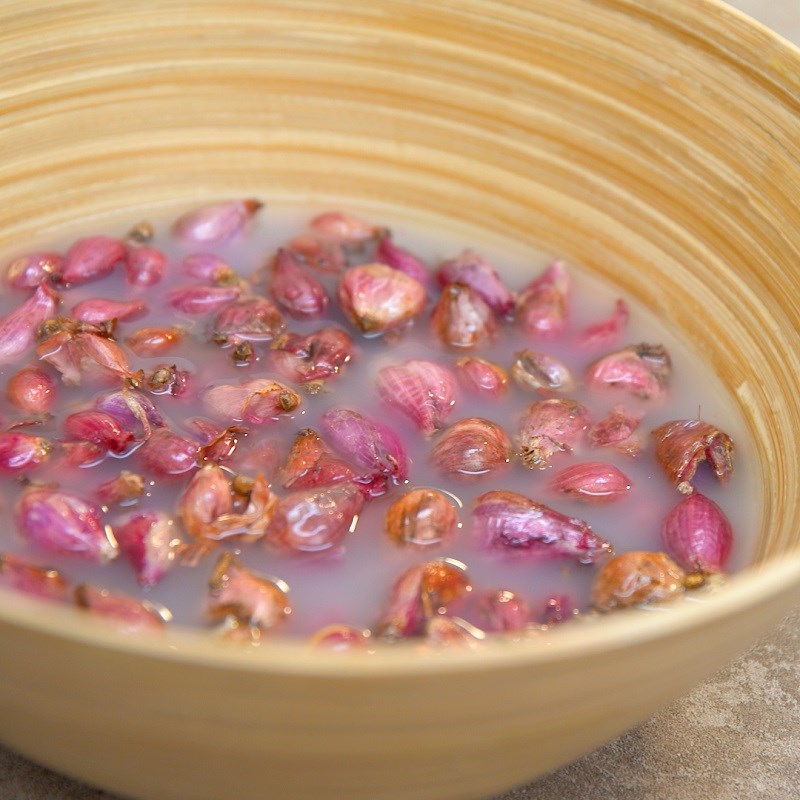
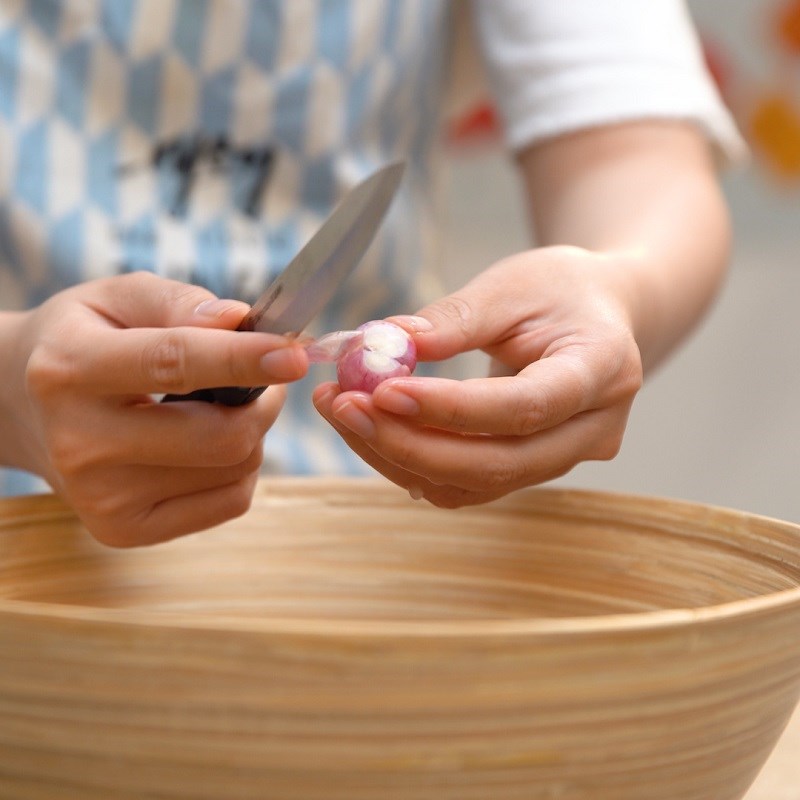
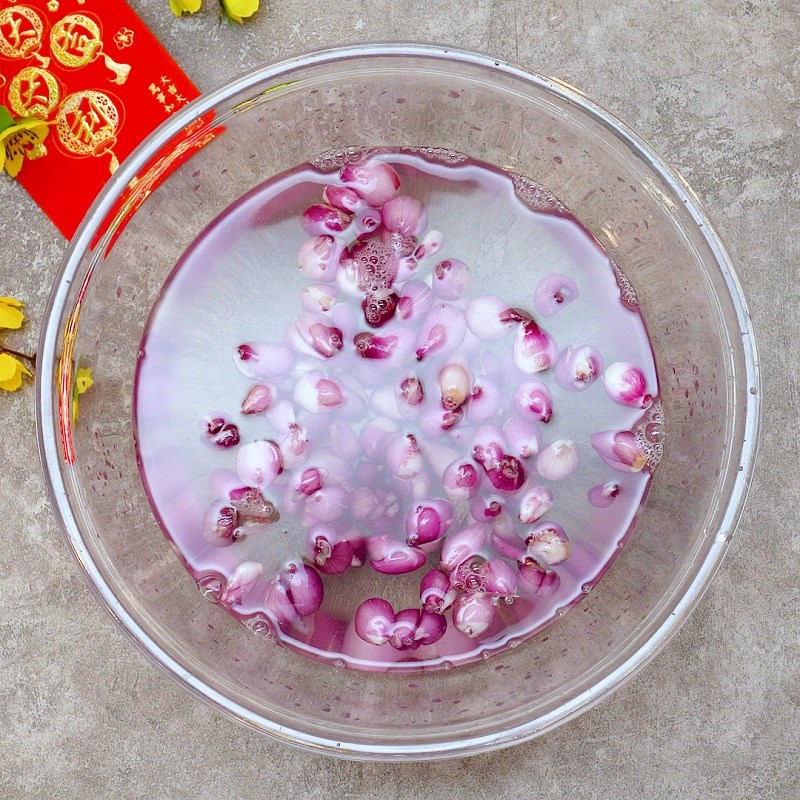
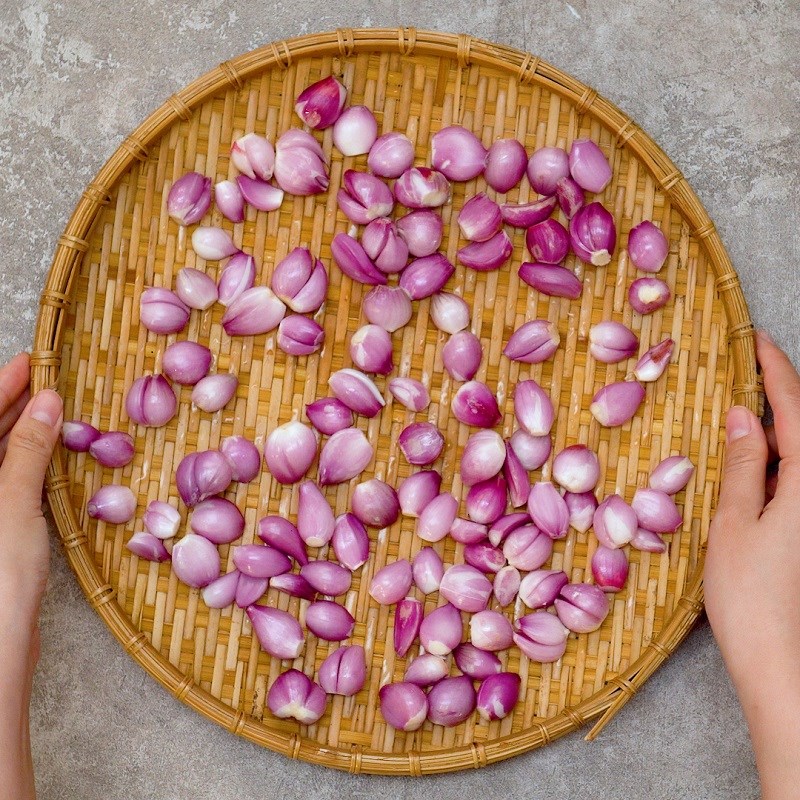
2. Make the pickling liquid
In a bowl, mix together:
-
300g sugar
-
50g salt
-
500ml vinegar
Stir until completely dissolved.
Layer the shallots, carrots, and chilies into a glass jar, alternating them for a nice visual presentation. Pour in the vinegar mixture until the ingredients are completely submerged.
Use bamboo skewers or a weight to keep the ingredients under the liquid to prevent spoilage.
Tip: Always keep the shallots fully submerged to avoid mold or surface scum forming.
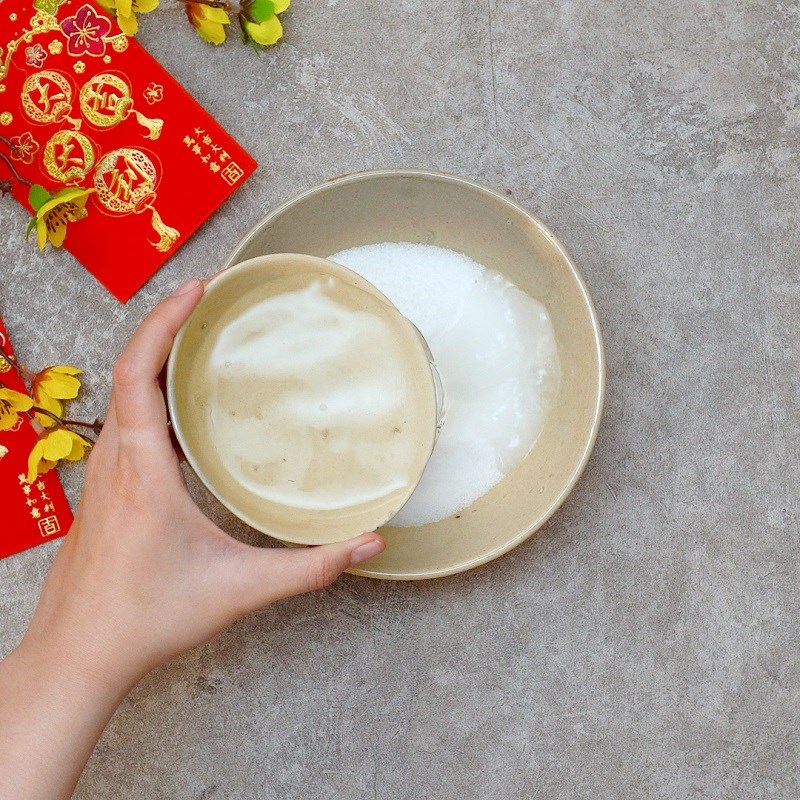
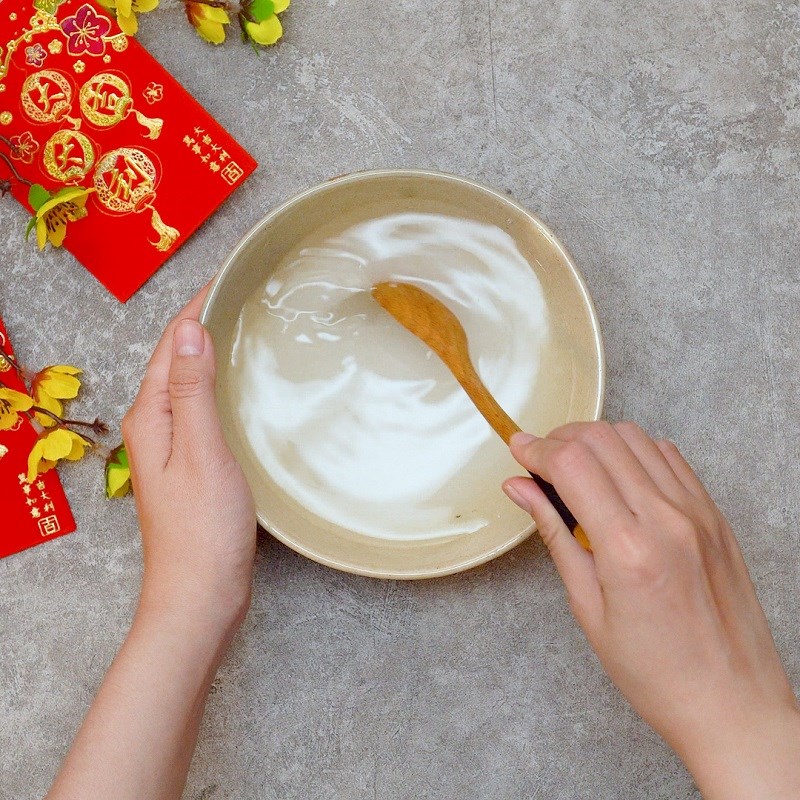
3. Pickling process
Let the shallots ferment in the vinegar mixture for about 2–3 days at room temperature. If the weather is cold or the shallots are more mature (older), you might need to leave them for an extra day for better flavor penetration.
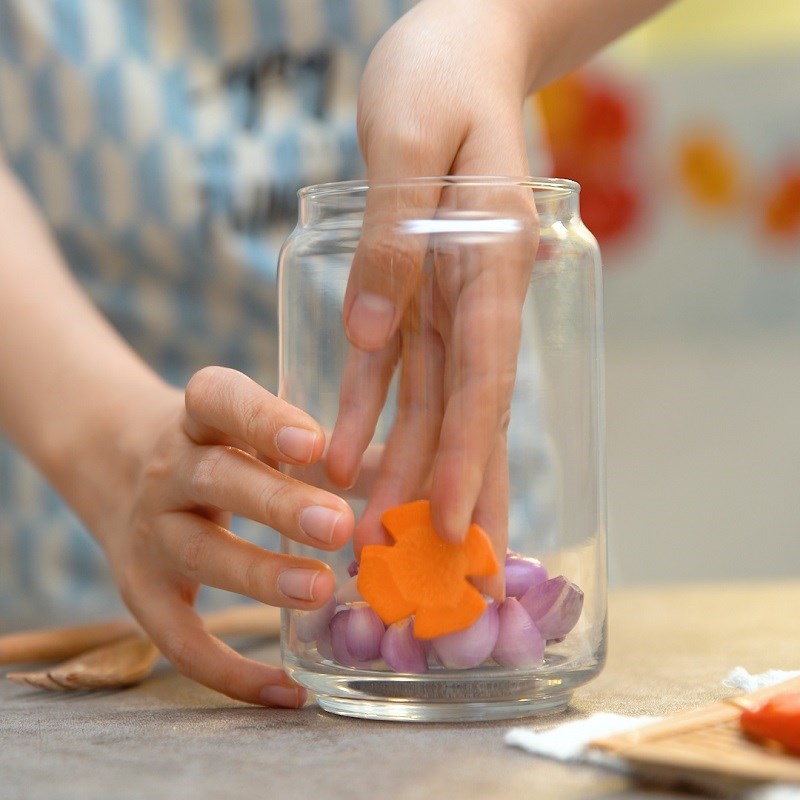

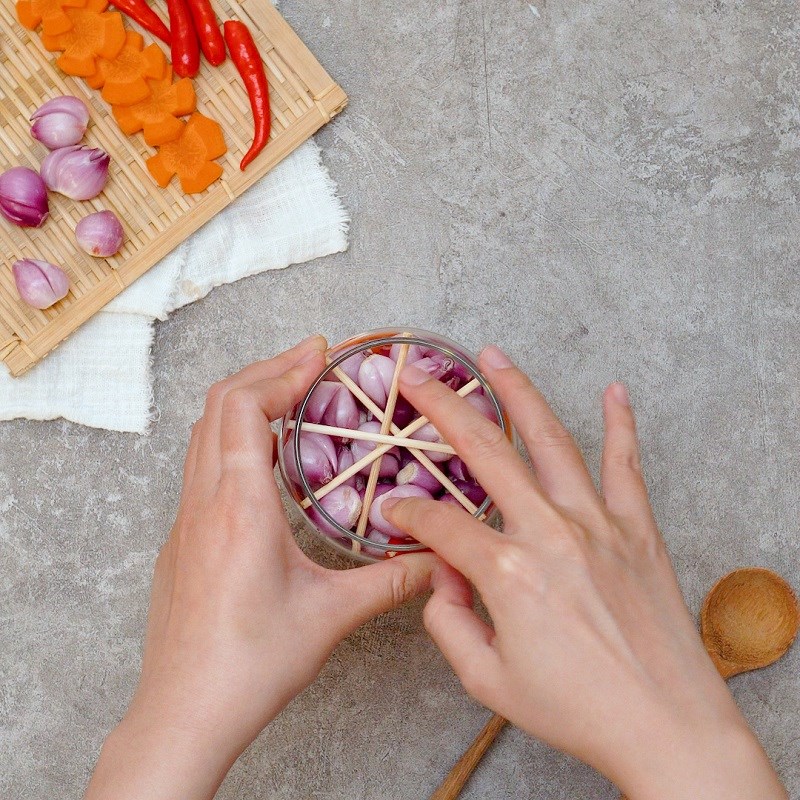
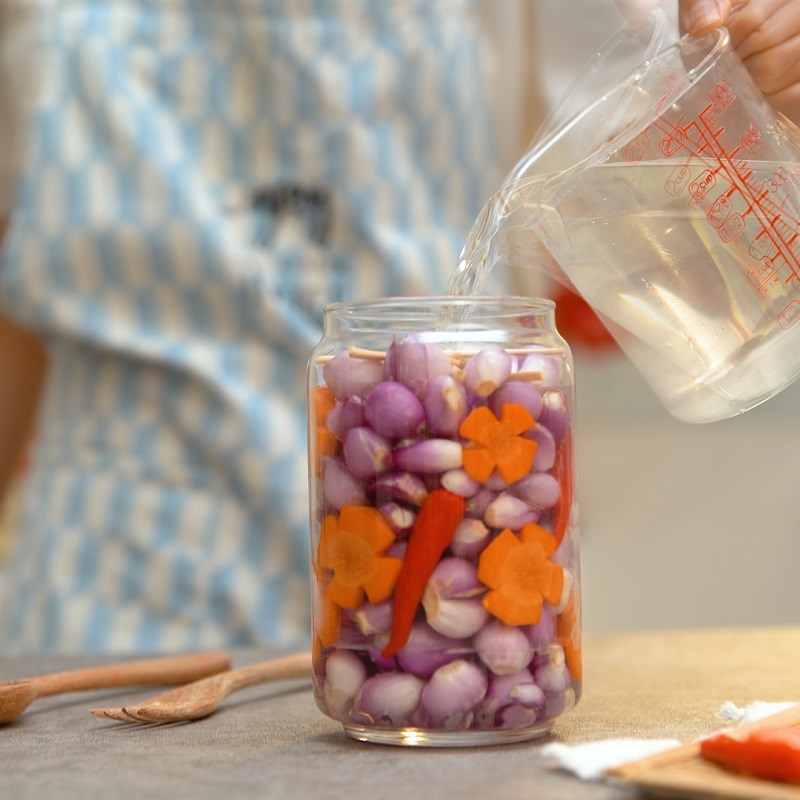
4. Final product
Once ready, the pickled shallots should have a vibrant color, be crisp, and carry a pleasant balance of sweet, sour, and slightly spicy flavors. They make the perfect side dish, especially during Lunar New Year meals, served with fatty pork dishes or sticky rice cakes.
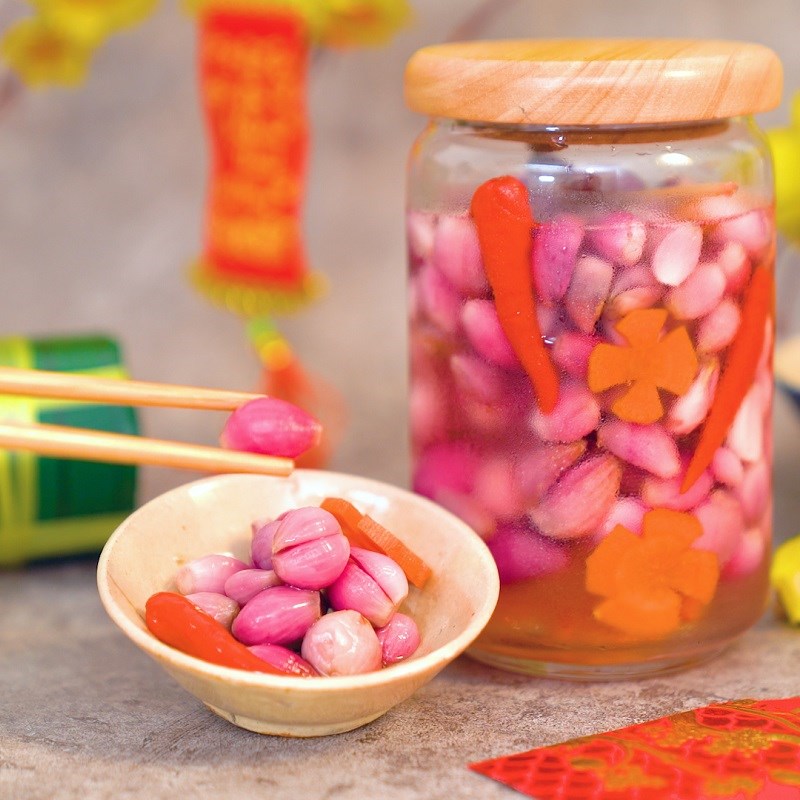
Pickled shallots, or dưa hành, are a traditional Vietnamese side dish most often enjoyed during Tết – Lunar New Year. Though simple in ingredients, this humble pickle carries deep cultural significance.
In the Vietnamese mindset, Tết is a time for renewal — to cleanse the old and welcome the new. Dưa hành reflects that spirit. Its tangy, sharp flavor is thought to “cut through the heaviness” of rich holiday foods like fatty pork (thịt kho), sticky rice cakes (bánh chưng, bánh tét), and stews. A small spoonful of these crisp, sour shallots refreshes the palate and balances every bite.
But more than just a taste enhancer, dưa hành is also symbolic: the sharpness of shallots is believed to awaken clarity and alertness for the new year. It’s no wonder many families say, “Ngày Tết mà thiếu dưa hành thì kém vui.” — Tết isn’t complete without pickled shallots.
Making dưa hành requires patience, care, and tradition — from soaking to sun-drying, then layering with vinegar, sugar, and chili. Many Vietnamese households pass down their own recipe, turning it into an heirloom of flavor and memory.
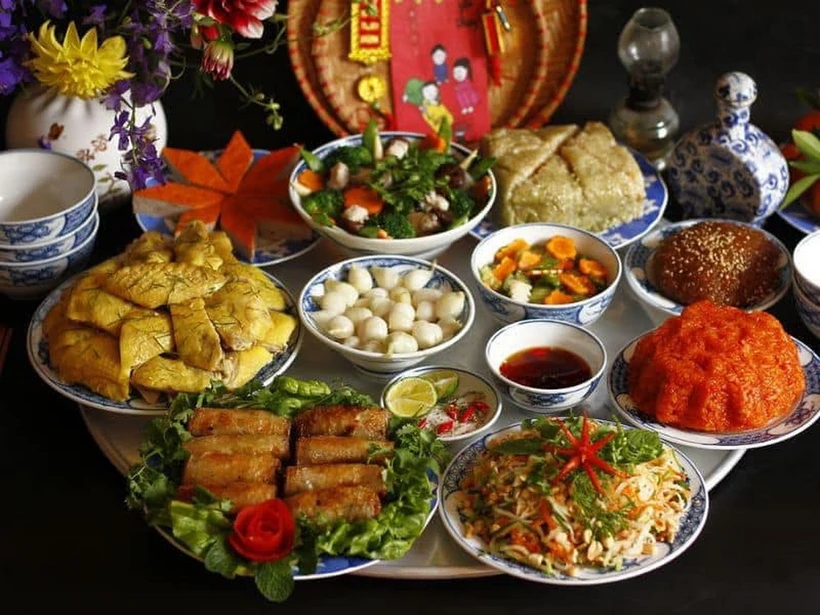
(Pickled onions on the traditional Tet meal tray)